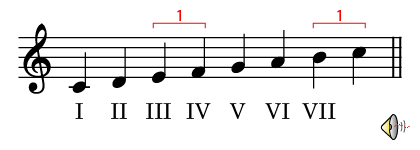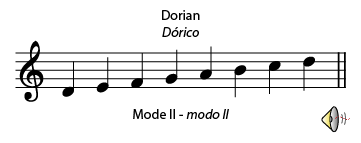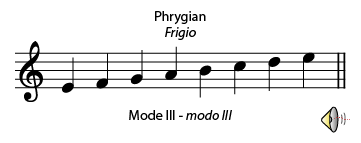Reference : scale
In the equal temperament tuning system, the octaves are equally divided into twelve notes. A scale is a series of notes selected from these twelve notes.
Each of these notes is called a degree. Each degree has its own name, but is often referred to by a Roman numeral:

Scales are distinguished by
- The number of notes they have
- The distance between the degrees.
For example, seven different scales can be built using the seven natural notes. Two examples:


Each of these scales has a characteristic order of whole and half steps.
A scale can be built starting from any note using accidentals to maintain the order of whole and half steps. For example, to build a major scale from the note D, F and C must be changed:

Such a scale is called the major scale of D. It is major because of its structure and a scale of D because D is the note on which it is built.
There are an infinite number of scales. Scales can also be created. Composers such as Claude Debussy, Olivier Messiaen, and Bela Bartok, among others, have done so in the recent past.
See S > Scales
